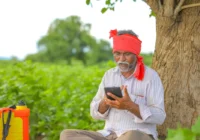Italy has a mere 400,000 buffaloes. Yet the country guards them as precious national wealth. The celebrated mozzarella cheese is made from buffalo milk. Italians use this iconic cheese in salads, pizzas, pasta and more. Such is the status of this cheese that “mozzarella di bufala” enjoys legal protection in the European Union.
Compared to Italy, India has a humungous buffalo population. The 20th Livestock Census found that India had more than 109 million buffaloes, above 56% of the world population. It also has huge buffalo germplasm diversity with 12 recognized and 14 distinct population groups. India is also home to Murrah, one of the world’s most renowned buffalo breeds. The buffalo is a triple purpose animal, being suitable for milk, meat and draught.
The Indian Shrimp Industry Needs Support to Survive COVID-19
With 76% of the global buffalo milk production, India is the world leader in this field. In 2018-19, India’s total milk production was over 187 million tons. As per official figures, more than 51 million buffaloes produced 92 million tons, while 74 million cows produced nearly 90 million tons. On average, buffaloes outperform cows in milk yield. The quality of milk is also better. Traditionally, quality is determined by the percentage of fat. Buffalo milk averages 6.7% fat, while the figure for cow milk is 4.4%.
Codex Alimentarius, the food code of the Food and Agriculture Organization, lays down standards, guidelines and codes of practice for consumer health and fair practices in food trade. Until 1990, Codex Alimentarius required restrictive labeling for milk if it did not come from a cow. This excluded all other milch animals, including the buffalo. Changing this definition was a high priority for India and it took tough negotiations to achieve it. In 1999, the country proposed that the definition of milk includes “mammary secretions” of all “milking animals.” Potentially, this redefinition paves the way for exporting buffalo milk products to other countries.
Undervalued National Asset
In most parts of the world, the buffalo is not a source of milk. So, ignorance of its role in milk production is understandable. Strangely, such ignorance exists in India too and is inexcusable. Almost all packaged milk sold in the country is a mix of both cow and buffalo milk. So are all the traditional sweets. Yet there is little public discourse about the buffalo.
In contrast, it is the cow that gets all the attention. Its elevated status comes from strong religious and cultural beliefs that deem the animal holy. In terms of pure dairy economics, the cow holds no advantage over the buffalo. Contrary to popular myth, cow milk neither has greater nutritive value nor better digestibility than buffalo milk. When it comes to cholesterol, cow milk has 330 milligrams per 100 grams, while the corresponding figure for buffalo milk is 275 milligrams. There is a case to be made that drinking buffalo milk instead of cow milk might reduce the risk of a heart attack.
For a dairy farmer, a buffalo is a low cost and low maintenance animal. It is neither finicky nor choosy about the quality or taste of its food. It survives and even thrives on coarse fodder and crop residues. For small farmers, the buffalo is the ideal choice. They struggle to maintain and manage pedigreed cows who need high-cost feed.
Beyond the productive milking life too, the buffalo remains an asset as it can be sold on what is called an “as is where is” basis. Unlike the cow, it is not constrained by any religious, cultural or social taboos. Old buffaloes and bull calves are often sold off for meat. A report by the Federation of Indian Chambers of Commerce and Industry (FICCI) found that the buffalo “contributes about 30% of the total meat production in the country.” Much of it is exported. In 2018-19, more than 1.2 million tons of buffalo meat products worth $3.6 billion (251.7 billion rupees) were exported.
While stray cattle are a problem in much of the country with more than 5 million on the loose, stray buffaloes are unknown. Farm mechanization has eliminated the use of oxen to plow fields. So, the problem of stray cattle is likely to increase. The nation would have to commit huge financial resources to contain this problem by maintaining unproductive animals. In light of the strict taboo on cow slaughter, the buffalo is a better option for both the farmer and the consumer.
Milk Is Milk
The urban consumer needs to understand one simple fact: milk is milk. The debate regarding A1 vis-à-vis A2 milk is mainly hype. The so-called mystical virtues of milk from specific breeds are nonsense. The nutritional quality of a particular type of milk more often than not has little basis in science. Cow and buffalo milk are essentially identical and well adapted for human consumption because they were domesticated many millennia ago for dairying purposes. Over time, they have been bred to produce higher volumes, and their milk is now highly acceptable to the human palate.
On an interesting note, few know that equine milk is closest to human milk. It is low in proteins, low in fat and rich in lactose. Still, no one has ventured into the donkey milk business yet. Low yields and little consumer preference make it uneconomical for dairy farmers.
As much as 83% to 91% of milk is water. There are minor but significant differences between buffalo and cow milk. Buffalo milk is much richer in solid contents than cow milk. Therefore, a larger number of dairy products can be processed and manufactured from it. Anything made from cow milk can be made from buffalo milk but not vice versa. The yield of products such as cream, butter, paneer or condensed milk from buffalo milk is higher, too. Cheese from buffalo milk has better chewing and stringing properties. Buffalo yogurt is thicker. Buffalo ghee and butter have better texture. Cow milk has its virtues as well. It is eminently suitable for traditional Indian soft sweets, such as chhena, sandesh, rosgulla and chum chum.
On the whole, buffalo milk has greater versatility. Its higher calorific content is particularly prized by athletes. A higher content of calcium and other minerals make it a healthier alternative for children. Given its many virtues, the buffalo deserves greater recognition and closer attention. This native species is our national treasure and must be the center of attention for India’s livestock policy.
*[Sharad Gupta provided input for this article.]
The views expressed in this article are the author’s own and do not necessarily reflect Fair Observer’s editorial policy.
Support Fair Observer
We rely on your support for our independence, diversity and quality.
For more than 10 years, Fair Observer has been free, fair and independent. No billionaire owns us, no advertisers control us. We are a reader-supported nonprofit. Unlike many other publications, we keep our content free for readers regardless of where they live or whether they can afford to pay. We have no paywalls and no ads.
In the post-truth era of fake news, echo chambers and filter bubbles, we publish a plurality of perspectives from around the world. Anyone can publish with us, but everyone goes through a rigorous editorial process. So, you get fact-checked, well-reasoned content instead of noise.
We publish 2,500+ voices from 90+ countries. We also conduct education and training programs
on subjects ranging from digital media and journalism to writing and critical thinking. This
doesn’t come cheap. Servers, editors, trainers and web developers cost
money.
Please consider supporting us on a regular basis as a recurring donor or a
sustaining member.
Will you support FO’s journalism?
We rely on your support for our independence, diversity and quality.






